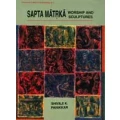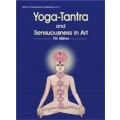Shop by Category

Tibetan Iconography of Buddhas, Bodhisattvas and Other Deities: A Unique Pantheon
Sold By:
DK Printworld
₹5,600.00
Short Description
The book studies the 360 icons of the Chu Fo P’u-sa Sheng Hsiang Tsan pantheon — referring to a rare set of woodcuts distinct among Buddhist pantheons. It analyses the unique features of this pantheon, pointing out the significance of each figure in the mythological/theological framework and minutely describing the iconography of the images.More Information
Frequently Bought Together

This Item: Tibetan Iconography of Buddhas, Bodhisattvas and O...
₹5,600.00
Sold by: DK Printworld
Choose items to buy together
ADD TO CART



This Item: Tibetan Iconography of Buddhas, Bodhisattvas and Other Deities: A Unique Pantheon
Sold By: DK Printworld
₹5,600.00
Sold By: DK Printworld
₹1,500.00
Total Price : ₹5,600.00
Product Details
Beginning with a few aniconic symbols, like footprints, the Bo tree or stupas, in the pre-christian Indian art, Buddhism, over the centuries, came to evolve a be-wildering array of deities — in ever-increasing number of pantheons. Interestingly, in Buddhism today, there are perhaps as many pantheons as there are countries, or internal regions or sects within them. Chou Fo P’u-sa sheng Hsiang Tsan, in focus here, is one of these many Buddhist pantheons and acknowledgedly the ‘culmination of Lamaist art’. Authored by Rol. pahi.rdo.rje, alias Lalitavajra, (1717-1786): an imperial preceptor of Emperor Ch’ien-lung (1736-1795), it is a rare set of 360 wood-cuts/xylographs, representing varying forms and manifestations of the Buddhas, Bodhisattvas, tantric and tutelary deities, arhats, sages, teachers, dharmapalas and protective divinities. It is also accompanied by 360 `eulogies' in Chinese. Two internationally distinguished scholars here team up to present afresh the Chou Fo p’u-sa Sheng Hsiang Tsan, aptly called ‘a unique pantheon’. Drawing together all the 360 wood-cut images in their vividly enlarged/enhanced versions — without compromising their aesthetic integrity, the book not only captures their subtle iconic devices, but spells out as well, in meticulous detail, all their iconic attributes, like body postures, faces, arms/hands, mudras, asanas, vahanas, companions, and whether clam or wrathful. The book also incorporates the names of each deity/deity-form in Sanskrit, Manchu, Mongolian, Tibetan, and Chinese. Unveiling, for the first time, the images of a veritably unique pantheon, in their enlarged format, and their accompanying Chinese eulogies, the book is bound to fascinate anyone concerned with Buddhist art and iconography.














